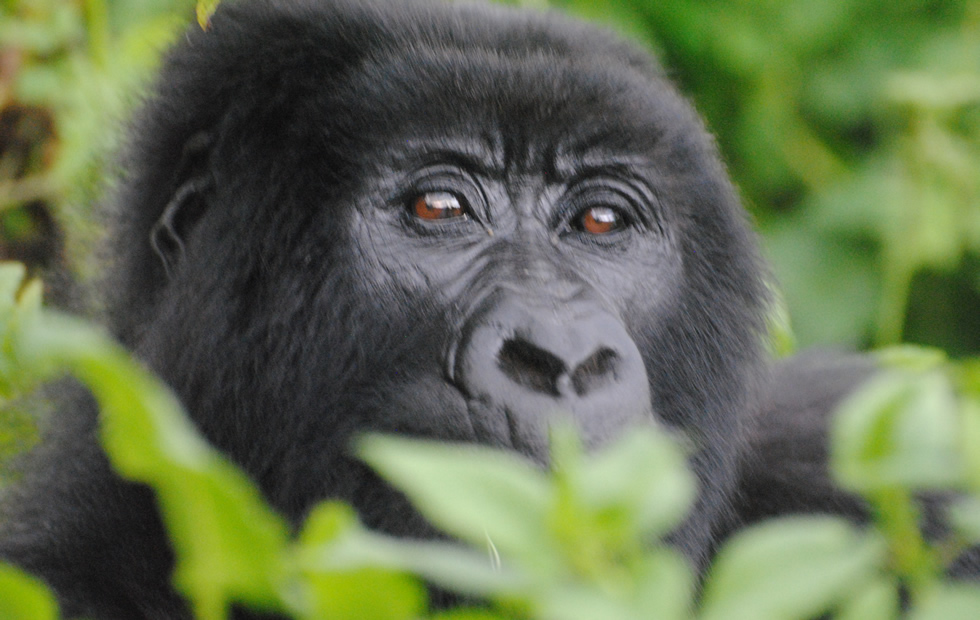Mountain Gorilla numbers have risen over 1000, a new census reports. At a colorful press conference held in Rubavu, western province of Rwanda, the results of the Virunga 2015/2016 census have been released. The mountain gorilla census of the Virunga Region have been established to have risen to 604 species. The new total represents an increase of 25% from the 2010 census.
The census involved 12 teams walking through the jungles counting the nests. The survey covered more than 2,000km of difficult walk through the forested terrain across the borders of Uganda, Rwanda and DR Congo. The surveyors searched for signs of the animals, such as nest sites, and collected faecal samples for genetic analysis.
The report established that “within the area encompassing the Mikeno Sector of Virunga National Park in DRC, Volcanoes National Park in Rwanda, and Mgahinga Gorilla National Park in Uganda, referred to as the Virunga Massif, there are 604 individual gorillas living as 41 groups and as 14 solitary males”. This is a rise if compared with the 480 individual gorillas found in 2010 living within 36 groups. In 2010, it was also found that there were 14 solitary males roaming the Virunga.
The Virunga Region
The Virunga Region is shared by Uganda, Rwanda and the Democratic Republic of Congo. The mountain gorillas roam freely across the borders and are jelously protected within three protected areas that are gazetted to the level of a national park. These are the Mgahinga National Park in Uganda, Virunga National Park in the Democratic Republic of Congo and the Volcanoes National Park of Rwanda.
The mountain gorillas live in two independent areas; the Virunga Region and Bwindi Impenetrable Forest. The 2011 Bwindi Gorilla Census established the total of the Bwindi population to be 400 and thus the global population must be over 1004 individuals!
What Does the Rise of Mountain Gorillas Mean?
The mountain gorilla is one of the most recognizable rare animals in the world and its population has been declared as endangered by the International Union for Conservation of Nature (IUCN). The new census reveals the surviving mountain gorilla population has now risen above 1,000.
The increase marks success for intensive conservation work done by different stake holders within the Virunga Region. There has been huge scores in joint management of national parks in Uganda and Rwanda, and gorilla tourism has proven to be a successful tool towards protecting the endangered mountain gorillas.
Different groups have been involved in promoting conservation of these great apes – local communities, governments, Non Governmental Organizations etc.
However a lot remains to be done in the Virunga National Park of Eastern Democratic Republic of Congo, a region riven by armed conflict. Since this year started a dozen park rangers have been murdered while on line of duty of protecting the endangered apes.




















